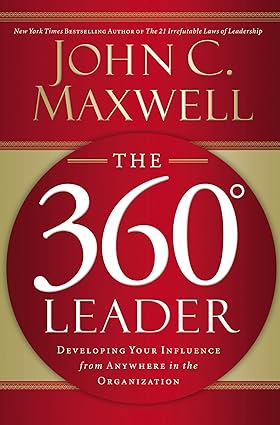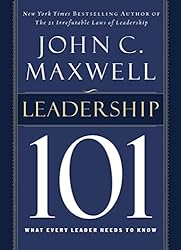Emma Lazarus (July 22, 1849 – November 19, 1887) was an American author of poetry, prose, and translations, as well as an activist for Jewish causes.
She wrote the sonnet “The New Colossus” in 1883.[1] Its lines appear inscribed on a bronze plaque, installed in 1903,[2] on the pedestal of the Statue of Liberty.[3] The last stanza of the sonnet was set to music by Irving Berlin as the song “Give Me Your Tired, Your Poor” for the 1949 musical Miss Liberty, which was based on the sculpting of the Statue of Liberty (Liberty Enlightening the World). The last stanza was also set by Lee Hoiby in his song “The Lady of the Harbor” written in 1985 as part of his song cycle “Three Women”.
Lazarus was also the author of Poems and Translations (New York, 1867); Admetus, and other Poems (1871); Alide: An Episode of Goethe’s Life (Philadelphia, 1874); Poems and Ballads of Heine (New York, 1881); Poems, 2 Vols.; Narrative, Lyric and Dramatic; as well as Jewish Poems and Translations.[4]
The first stimulus for Lazarus’ writing was offered by the American Civil War. A collection of her Poems and Translations, verses written between the ages of fourteen and seventeen, appeared in 1867 (New York), and was commended by William Cullen Bryant.[9] It included translations from Friedrich Schiller, Heinrich Heine, Alexandre Dumas, and Victor Hugo.[7][5] Admetus and Other Poems followed in 1871. The title poem was dedicated “To my friend Ralph Waldo Emerson”, whose works and personality were exercising an abiding influence upon the poet’s intellectual growth.[7] During the next decade, in which “Phantasies” and “Epochs” were written, her poems appeared chiefly in Lippincott’s Monthly Magazine and Scribner’s Monthly.[9]
By this time, Lazarus’ work had won recognition abroad. Her first prose production, Alide: An Episode of Goethe’s Life, a romance treating of the Friederike Brion incident, was published in 1874 (Philadelphia), and was followed by The Spagnoletto (1876), a tragedy. Poems and Ballads of Heinrich Heine (New York, 1881), followed, and was prefixed by a biographical sketch of Heine; Lazarus’ renderings of some of Heine’s verse are considered among the best in English.[18] In the same year, 1881, she became friends with Rose Hawthorne Lathrop.[19] In April 1882, Lazarus published in The Century Magazine the article “Was the Earl of Beaconsfield a Representative Jew?”. Her statement of the reasons for answering this question in the affirmative may be taken to close what may be termed the Hellenic and journeyman period of Lazarus’ life, during which her subjects were drawn from classic and romantic sources.[20]
Lazarus also wrote The Crowing of the Red Cock,[5] and the sixteen-part cycle poem “Epochs”.[21] In addition to writing her own poems, Lazarus edited many adaptations of German poems, notably those of Johann Wolfgang von Goethe and Heinrich Heine.[22] She also wrote a novel and two plays in five acts, The Spagnoletto, a tragic verse drama about the titular figure and The Dance to Death, a dramatization of a German short story about the burning of Jews in Nordhausen during the Black Death.[23] During the time Lazarus became interested in her Jewish roots, she continued her purely literary and critical work in magazines with such articles as “Tommaso Salvini”, “Salvini’s ‘King Lear'”, “Emerson’s Personality”, “Heine, the Poet”, “A Day in Surrey with William Morris”, and others.[24]
The New Colossus
Not like the brazen giant of Greek fame,
With conquering limbs astride from land to land;
Here at our sea-washed, sunset gates shall stand
A mighty woman with a torch, whose flame
Is the imprisoned lightning, and her name
Mother of Exiles. From her beacon-hand
Glows world-wide welcome; her mild eyes command
The air-bridged harbor that twin cities frame.
“Keep, ancient lands, your storied pomp!” cries she
With silent lips. “Give me your tired, your poor,
Your huddled masses yearning to breathe free,
The wretched refuse of your teeming shore.
Send these, the homeless, tempest-tost to me,
I lift my lamp beside the golden door!”
Lines from her sonnet “The New Colossus” appear on a bronze plaque in the pedestal of the Statue of Liberty which was placed in 1903.[2] The sonnet was written in 1883 and donated to an auction, conducted by the “Art Loan Fund Exhibition in Aid of the Bartholdi Pedestal Fund for the Statue of Liberty” in order to raise funds to build the pedestal.[b][c] Lazarus’ close friend Rose Hawthorne Lathrop was inspired by “The New Colossus” to found the Dominican Sisters of Hawthorne.[26]
She traveled twice to Europe, first in 1883 and again from 1885 to 1887.[27] On one of those trips, Georgiana Burne-Jones, the wife of the Pre-Raphaelite painter Edward Burne-Jones, introduced her to William Morris at her home.[28] She also met with Henry James, Robert Browning, and Thomas Huxley during her European travels.[16] A collection of Poems in Prose (1887) was her last book. Her Complete Poems with a Memoir appeared in 1888, at Boston.[5]



















